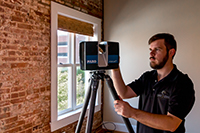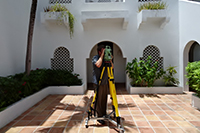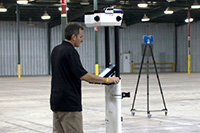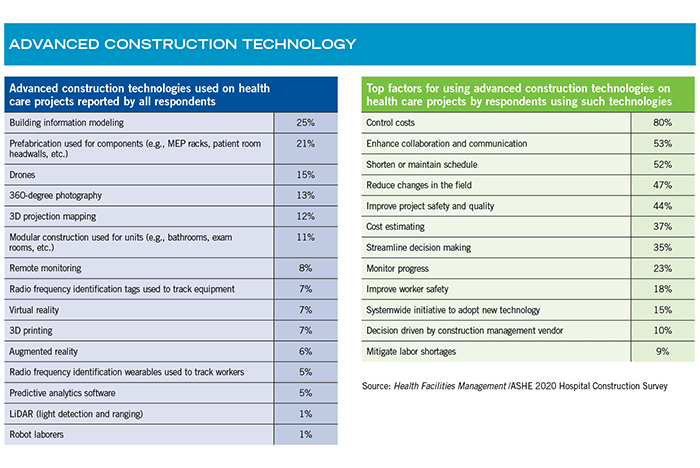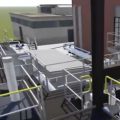Each year, Health Facilities Management magazine, a publication of the American Society for Healthcare Engineering (ASHE), releases the results of its hospital construction survey.
This year’s biggest trend? Construction Technology!
Top firms across the nation are relying on a number of technologies to catalyze their planning and promote efficiency throughout the life-cycle of their healthcare projects. Staying on budget and on schedule is finally becoming a reality with the help of Building Information Modeling (BIM), 360º Visualizations using drones, laser scanners, and 360 photography.
